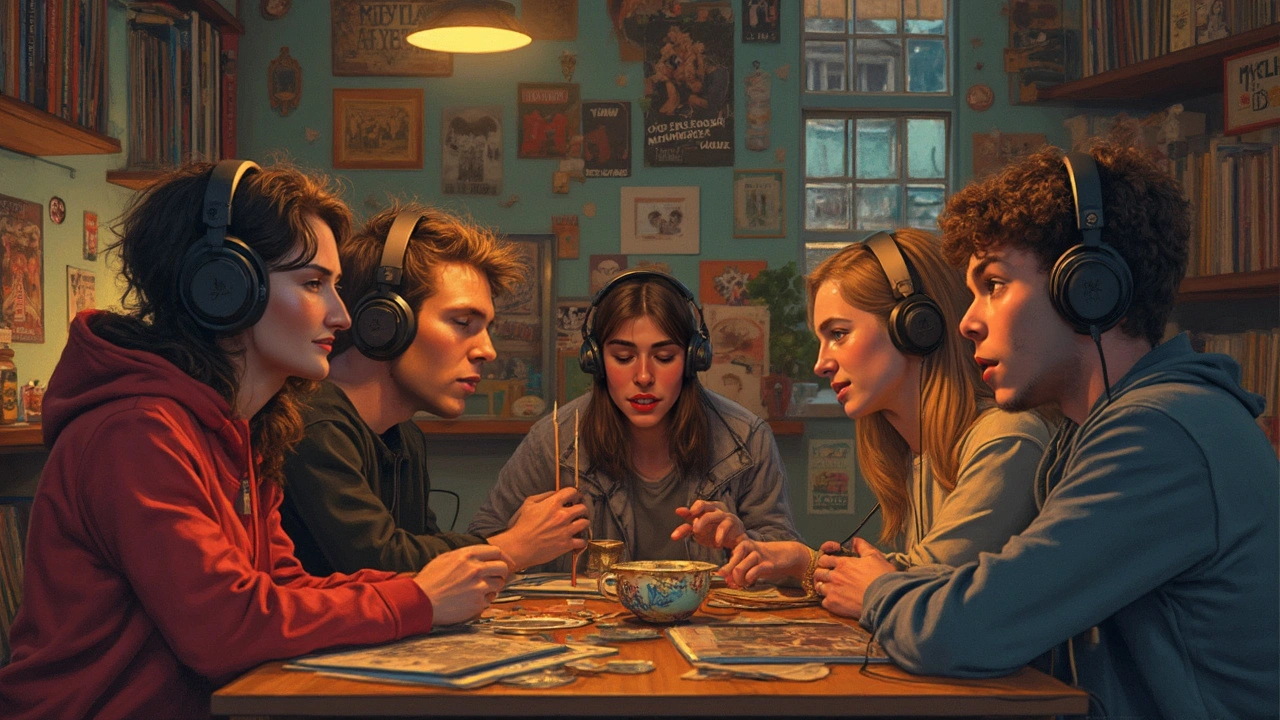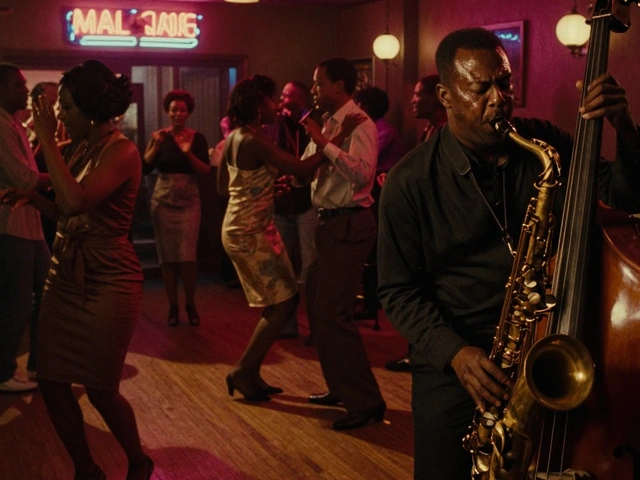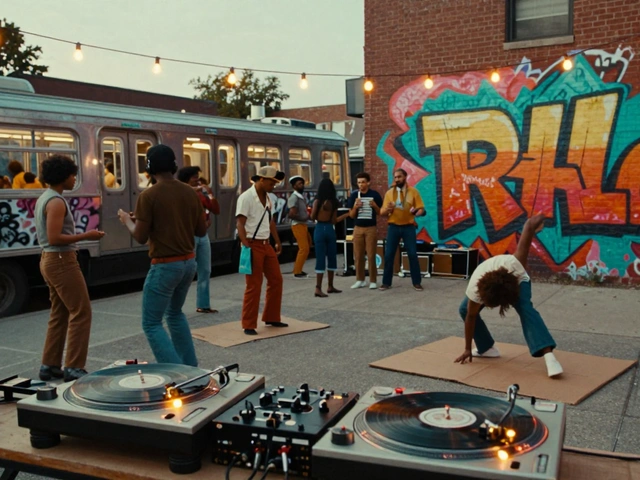Sit in a packed stadium during a rock concert and watch people lose themselves, headbanging and singing every word. Next day, walk past a jazz club as quiet listeners brood over a double bass groove, heads nodding in time. Ever think about how different their brains must be? It's not just personal taste or childhood nostalgia. Your love for pop, metal, or Afrobeat goes way deeper—wired into your biology, sculpted by your life, and triggered by how your brain takes in every beat, lyric, and rhythm. Music isn’t just a background track for life’s moments. It’s a key that fits perfectly into some doors and refuses to turn in others. But what exactly makes us prefer some music genres over others?
The Brain’s Love Affair With Music: How We’re Wired for Tunes
Your brain is always hunting for patterns. Think of music like an endless puzzle—notes, rhythms, and harmonies all fitting together or sometimes deliberately clashing to mess with your expectations. When a certain genre clicks with you, your brain’s pleasure system lights up. Seriously, fMRI scans show that when people hear tunes they love, their brains release dopamine, that classic reward chemical you get from chocolate or laughter. The trick is, which music flips your switches?
Turns out, researchers have found solid links between personality and music taste. A 2016 study from Cambridge University found extroverts often chose energetic music—dance, hip-hop, pop—while more introverted folks leaned toward complex genres like classical and jazz. The study surveyed over 10,000 people across the globe, showing that these trends go beyond one country or culture. What’s happening? Extroverts typically crave stimulation, so their brains lap up bass-heavy, upbeat tracks. Meanwhile, introverts get enough stimulation from within and prefer the nuance and detail in slower, layered music.
Chemicals tell another story. Your brain’s amygdala, which controls how you process emotions, is more reactive when you hear music that matches your mood. That’s why heartbreak can pull us to moody singer-songwriters or how a sunny drive with mates is best with thumping pop. Music even activates parts of the brain linked to memories. Ever notice how a single riff can yank you back to high school or bring up a family road trip in a flash? The hippocampus is at work, gluing your music taste to your strongest life moments.
But don’t rule out pure biology. Genetics play a role in pitch recognition and even rhythm sensitivity—about 30% heritable, going by a 2017 Finnish twin study. Some people are wired to recognize and enjoy more complex rhythms; others get their kicks from catchy, straight beats. If you ever wondered why your mate can’t handle your prog rock playlist, remember, their brain might just be wired differently.
Your brain wants novelty and comfort. Ever play your favorite song to death, only to crave something different? The predictive coding theory says our brains want some patterns to feel familiar, but also enough surprise to keep things interesting. That’s why a clever key change or unexpected drop can send chills down your spine, but a song that’s too repetitive or wild won’t feel right.
Let’s not forget musical exposure is a huge deal. If you grew up in a house blaring Italian opera on Sundays, odds are strong you’ll have more patience for Lucia di Lammermoor than someone who only heard R&B on karaoke nights. Music’s a social glue. This is partly because of the mirror neuron theory—when we see others react emotionally to music, our brains mirror that feeling. That’s why singing football chants can make strangers act like lifelong pals or why a wedding playlist brings every generation to the dancefloor, even Grandpa Jerry.

Cultural Baggage: Why Our Environment Shapes Genre Preferences
Your postcode might have more to do with your playlist than you realise. Culture shapes what music you hear, what you value, and even the sounds your brain finds pleasant. Take scales, for example. Western pop heavily uses the major and minor scale, but if you grew up in Indonesia or Turkey, your ears might prefer pentatonic or microtonal scales that sound odd to outsiders. Studies show that unfamiliar chords or rhythms can feel confusing, even wrong, unless repeated exposure rewires your musical tastes.
Peer pressure plays a sneaky role. Remember your first big festival? The throb of the crowd, the shared excitement, maybe even a chant you never heard before suddenly felt like yours. That sense of belonging forges deep connections between your identity and your favorite genres. Teen years especially are music’s golden window—our brains are still developing, soaking up whatever sounds are around us. Neuroscientists found that songs popular during our formative years create stronger and more permanent neural pathways. That explains why Gen Z might live on hyperpop and TikTok beats, while Millenials go misty-eyed for 90s grunge and R&B.
Check out this snapshot of music taste around the world:
| Country | Most Streamed Genre (2024) | Key Reason for Popularity |
|---|---|---|
| USA | Hip-Hop/Rap | Dominance in pop culture, internet virality |
| Brazil | Sertanejo | National pride, links to rural life |
| South Korea | K-pop | Massive media campaigns, exportable idol culture |
| Nigeria | Afrobeats | Rising local stars breaking into global charts |
| Australia | Indie Rock & Alternative | Vibrant festival scene, strong local bands |
Music also acts as a memory anchor. Special events—protests, weddings, victories—often come with their own anthem. Indigenous Australian music, for example, isn’t just for entertainment but for preserving Dreamtime stories and connecting deeply with land and community. When someone moves to a new country, their taste can shift or blend with the music of their new home, leading to hybrid genres or unexpected Spotify recommendations. Think reggaeton in Spain, K-pop in the Philippines, or Europop seeping into Sydney’s club scene. Global streaming and TikTok trends introduce new sounds overnight, letting a Bollywood number or Zimbabwean amapiano track earn Aussie fans in weeks, not years.
Here’s a pro-tip: if you want to expand your musical taste, listen with others—especially people from different backgrounds. The more you’re exposed, the more your brain rewires its pleasure circuits. Within weeks, what felt strange can become addictively catchy. Don’t trust your first reaction—think about how sushi or black coffee needed a few tries before you loved them. Music is just as much an acquired taste as food.
Sometimes, music preference isn’t just about the tunes, but the message. Punk, for instance, may sound angry or crude, but for many, it’s about resisting the mainstream, shouting back at authority, or expressing emotions no other genre could carry. The same goes for hip-hop, country, and folk—each genre offers a unique story to its fans, giving voice to people otherwise unheard. You might relate to a genre because it speaks to your struggles, joys, or beliefs.

Tips to Hack Your Musical Taste and Make the Most of It
If you’re stuck in a musical rut—same playlists, same bands—you’re missing out on all the stuff your brain craves: novelty, joy, and the thrill of discovery. The good news? You can reprogram your musical taste at any age, and it’s good for your brain health, too. Older adults who regularly explore new music have sharper minds and better emotional well-being than those who stick to the same old tracks. Here’s how you can shake it up:
- music preference: Don’t just shuffle your library. Ask a friend to share their top five tracks and promise to listen without skipping. You’ll be surprised by the curveballs.
- Use streaming algorithm tools—let Spotify or Apple Music suggest “Discover Weekly” or “For You” playlists based on your listening. Their AI models are scary good at puzzling out what you might love next, but will always slide in something a little unfamiliar.
- Switch up listening environments. Try jazz on your early commute, pop during workouts, and folk tunes while studying. Context makes a huge difference to how you perceive a song.
- Dig into the “story behind the song.” Genres that felt distant—say, Afro-Cuban jazz—can become a lot more engaging once you get the backstory or learn who’s performing. YouTube documentaries and artist podcasts are goldmines.
- Let go of music snobbery. Every genre, even bubblegum pop or deathcore, has diehard fans and passionate creators. There’s always a reason millions fall in love with it. Give it a fair listen.
- Keep an open mind at concerts and festivals. Live music hits the brain differently, amplifying emotions, and shaking up what you thought you liked.
- For parents: expose kids early and often to a wild mix of genres. Babies who hear a greater variety of music develop better listening and language skills, too.
- Try making your own music or remixes. You’ll appreciate the complexity and charm of genres you never considered before.
- Explore genres from other cultures—like Bollywood, J-Pop, or Malian blues—on platforms like Bandcamp or SoundCloud, not just Spotify’s Top 40 playlist.
- Start a listening journal. Jot down which songs really hit you and which ones don’t—and revisit them after a few months. Sometimes your mood or season changes your taste.
Still, don’t force it too much. Sometimes you just won’t click with a certain sound, and that’s fine. Your brain’s unique wiring—a mix of genes, memories, and past experiences—means your playlist is like a fingerprint.
Music is a mirror and an escape. It helps you connect, rebel, grieve, and celebrate. No two brains are the same, and that’s why one person’s love for trance, trap, or Taylor Swift is another’s cue to break out the headphones and tune into something new. Whichever way you vibe, there’s science humming underneath—one beat, one memory, one habit at a time.






